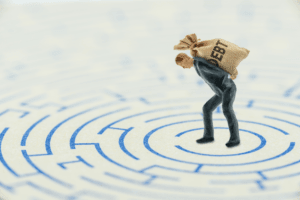
For example, a company might have positive FCF because it’s not spending any money on new equipment. Eventually, the equipment will break down and the business might have to cease operations until the equipment is replaced. For instance, Tim’s delivery truck might need to be replaced. As you can see, Tim’s free cash flow is greater than his capital expenditures. This excess free cash flow can be used to give investors a return or invest back into the business. If Tim’s CFC was less than his capital expenditures, he would have negative free cash flow and would not have enough money coming in to pay for his operations and expansions.
- The retained earnings statement is a bridge between the income statement and the balance sheet.
- The accounting equation states that a company’s total assets are equal to the sum of its liabilities and its shareholders’ equity.
- While single-entry accounting can help you kickstart your bookkeeping knowledge, it’s a dated process that many other business owners, investors, and banks won’t rely on.
- At any moment in time the Accounting Equation must balance.
- Of course, this lead to the chance of human error, which is detrimental to a company’s health, balance sheets, and investor ability.
Understanding the Accounting Equation
Using Apple’s 2023 earnings report, we can find all the information we need for the accounting equation. However, equity can also be thought of as investments into the company either by founders, owners, public shareholders, or by customers buying products leading to higher revenue. Nabil invests $10,000 cash in Apple in exchange for $10,000 of common stock.
When Should I Use the Basic Accounting Equation?

Assets include cash and cash equivalents or liquid assets, which may include Treasury bills and certificates of deposit (CDs). Shareholders’ equity comes from corporations dividing their ownership into stock shares. We use owner’s equity in a sole proprietorship, a business with only one owner, and they are legally liable for anything on a personal level.
Transaction 6:
- In this example, we used the business bank account to purchase a business asset.
- Apple performs $3,500 of app development services for iPhone 13 users, receives $1,500 from customers, and bills the remaining balance on the account ($2,000).
- For example, if the total liabilities of a business are $50K and the owner’s equity is $30K, then the total assets must equal $80K ($50K + $30K).
- The accounting equation shows how a company’s assets, liabilities, and equity are related and how a change in one results in a change to another.
- Only after debts are settled are shareholders entitled to any of the company’s assets to attempt to recover their investment.
- This arrangement can be ideal for sole proprietorships (usually unincorporated businesses owned by one person) in which there is no legal distinction between the owner and the business.
After almost a decade of experience in public accounting, he created MyAccountingCourse.com to help people learn accounting & finance, pass the CPA exam, and start their career. Below is a portion of Exxon Mobil Corporation’s (XOM) balance sheet as of September 30, 2018. Rearrangement in such a way can be useful when looking at bankruptcy. The equation layout can help shareholders to see more easily how they will be compensated.
What is Free Cash Flow?

By decomposing equity into component parts, analysts can get a better idea of how profits are being used—as dividends, reinvested into the company, or retained as cash. Adam Hayes, Ph.D., CFA, is a financial writer with 15+ years Wall Street experience as a derivatives accounting equation broken down trader. Besides his extensive derivative trading expertise, Adam is an expert in economics and behavioral finance. Adam received his master’s in economics from The New School for Social Research and his Ph.D. from the University of Wisconsin-Madison in sociology.
- Under all circumstances, each transaction must have a dual effect on the accounting transaction.
- This $45,000 could be put back into the business to purchase more inventory, or it could be used to issue Tim and his new investors a dividend at the end of the year.
- Company credit cards, rent, and taxes to be paid are all liabilities.
- An accounting transaction is a business activity or event that causes a measurable change in the accounting equation.
- The $30,000 cash was deposited in the new business account.
- This concept is a simple description of the accounting equation.
- Regardless of how the accounting equation is represented, it is important to remember that the equation must always balance.
Arrangement #3: Assets = Liabilities + Owner’s Capital – Owner’s Drawings + Revenues – Expenses
Although the balance sheet always balances out, the accounting equation can’t tell investors how well a company is performing. In practice, maintaining the balance of the accounting equation may involve multiple accounts. For example, purchasing inventory on credit increases both the inventory account (an asset) and the accounts payable account (a liability). These principles ensure consistency and reliability in financial reporting, enabling stakeholders to make informed decisions.

